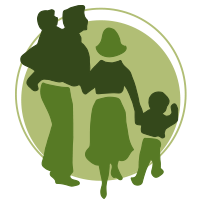September often feels like a fresh start. New routines, changing seasons, and that “back-to-business” energy after summer. But let’s be honest—jumping straight into busy schedules can feel overwhelming. That’s why September is the perfect time to build in a few small, daily self-care habits that keep you steady, calm, and well.
Here’s a friendly checklist to help you support your mind and body this month.
Stay hydrated
It sounds simple, but drinking enough water really does make a difference. Dehydration can leave you tired, foggy-headed, and more likely to get headaches. Keep a reusable bottle with you and aim to sip steadily throughout the day.
Stretch it out
A few minutes of stretching in the morning or evening helps release muscle tension, especially if you’re spending more time at desks or in the car again. Stretching supports flexibility, circulation, and posture—helping you feel looser and more energised.
Take tech breaks
Screens are part of daily life, but too much can strain your eyes and overstimulate your nervous system. Try the 20-20-20 rule: every 20 minutes, look at something 20 feet away for 20 seconds. Even better, schedule short screen-free pockets in your day to reset.
Breathe deeply
Your breath is one of the quickest ways to calm the nervous system. Just 2–3 minutes of slow, steady breathing—inhale through your nose, exhale longer through your mouth—can lower stress and bring your body back into balance.
Step outside
Late summer light and fresh air are powerful mood boosters. Even a short walk can reduce stress, support sleep, and lift your energy. If you can, find a green space—time in nature has been linked to better overall wellbeing.
Prioritise rest
As routines shift, sleep often takes a hit. Aim for a regular bedtime and cut down on screens before sleep to give your body a chance to wind down. Even small improvements to sleep hygiene can make a big impact on how you feel each day.
Your gentle reminder
Self-care doesn’t need to be complicated. These small daily steps—hydration, stretching, breaks, breathing, fresh air, rest—stack up over time. Think of them as tiny anchors to keep you steady through the busyness of September.
At Luck’s Yard Clinic, we love supporting our patients with both hands-on therapies and practical lifestyle advice. If you’d like more personalised support this season, our team is here to help.
Sources
- Popkin, B. M., D’Anci, K. E., & Rosenberg, I. H. (2010). Water, hydration, and health. American Journal of Clinical Nutrition, 92(4), 875–883. Link
- Page, P. (2012). Current concepts in muscle stretching for exercise and rehabilitation. British Journal of Sports Medicine, 46(12), 867–878. Link
- Sheppard, A. L., & Wolffsohn, J. S. (2018). Digital eye strain: prevalence, measurement, and amelioration. Survey of Ophthalmology, 63(4), 557–583. Link
- Jerath, R., Crawford, M. W., Barnes, V. A., & Harden, K. (2015). Self-regulation of breathing as a primary treatment for anxiety. Medical Hypotheses, 85(5), 486–496. Link
- Twohig-Bennett, C., & Jones, A. (2018). The health benefits of the great outdoors: A systematic review and meta-analysis of greenspace exposure and health outcomes. Environmental Research, 166, 628–637. Link
- Walker, M. (2017). Why We Sleep: Unlocking the Power of Sleep and Dreams. Scribner. Link
Photo by Hassan OUAJBIR: https://www.pexels.com/photo/woman-doing-hand-heart-sign-1535244/




